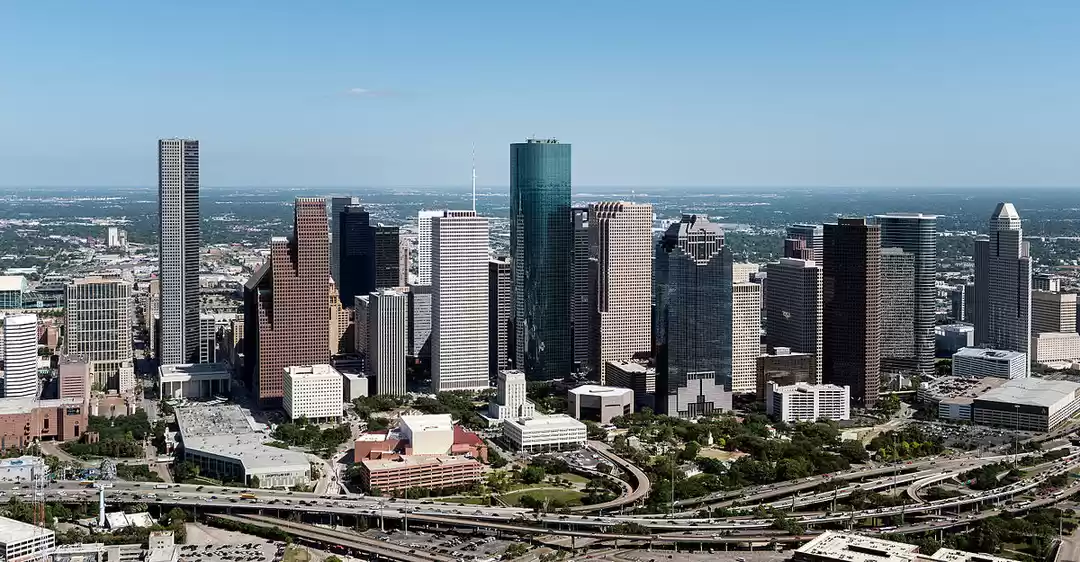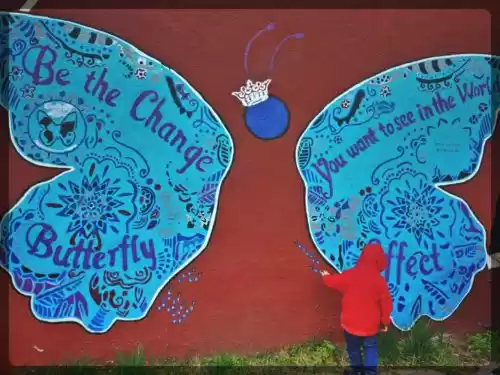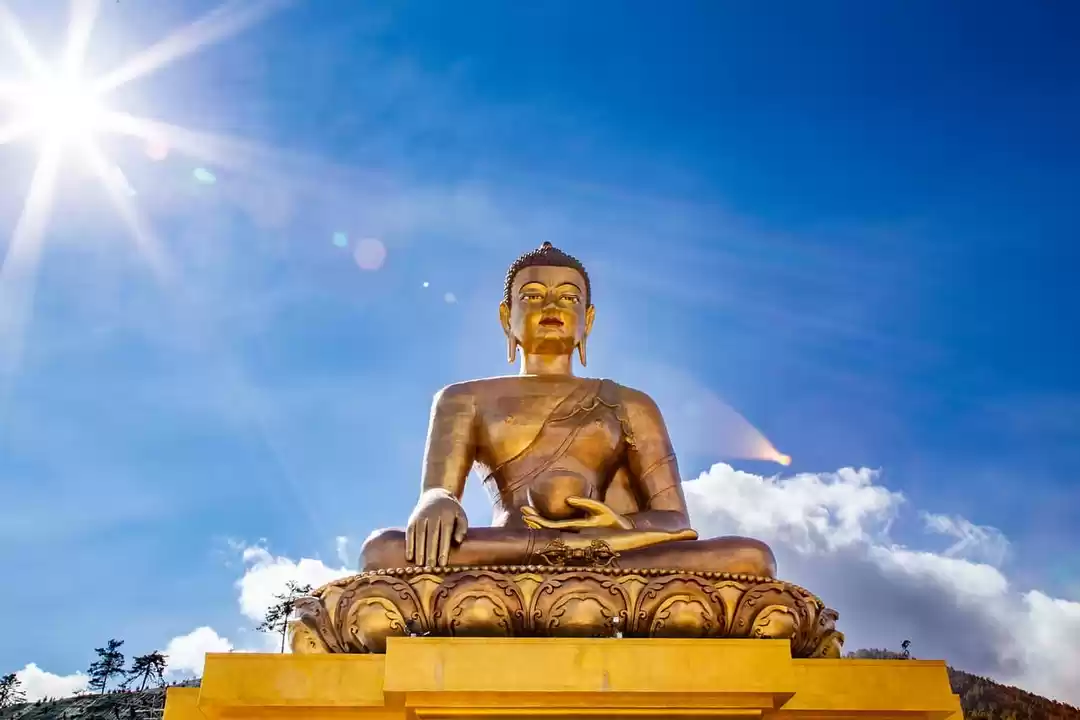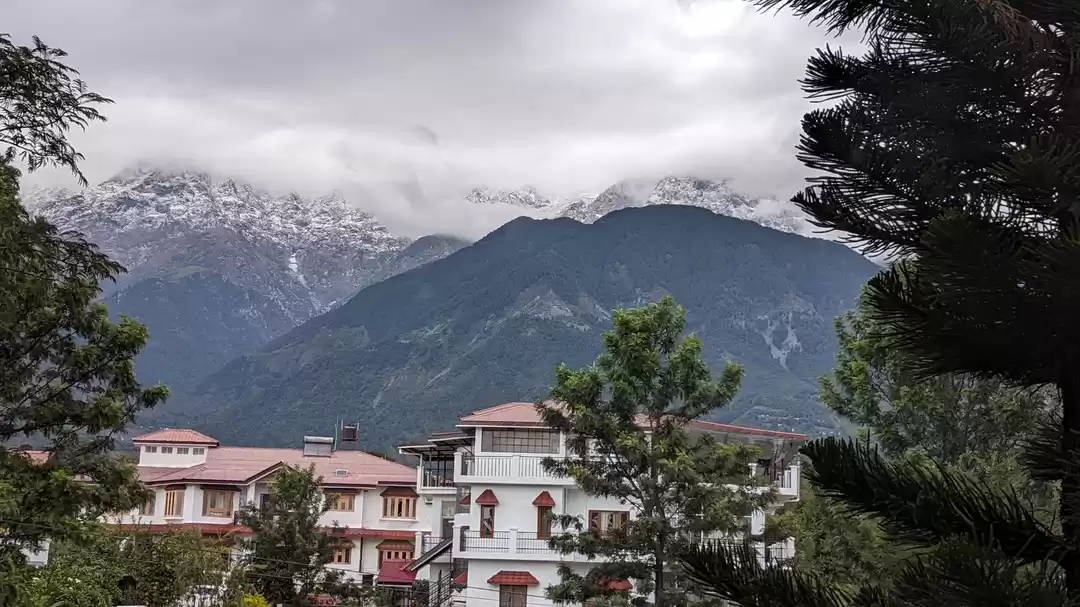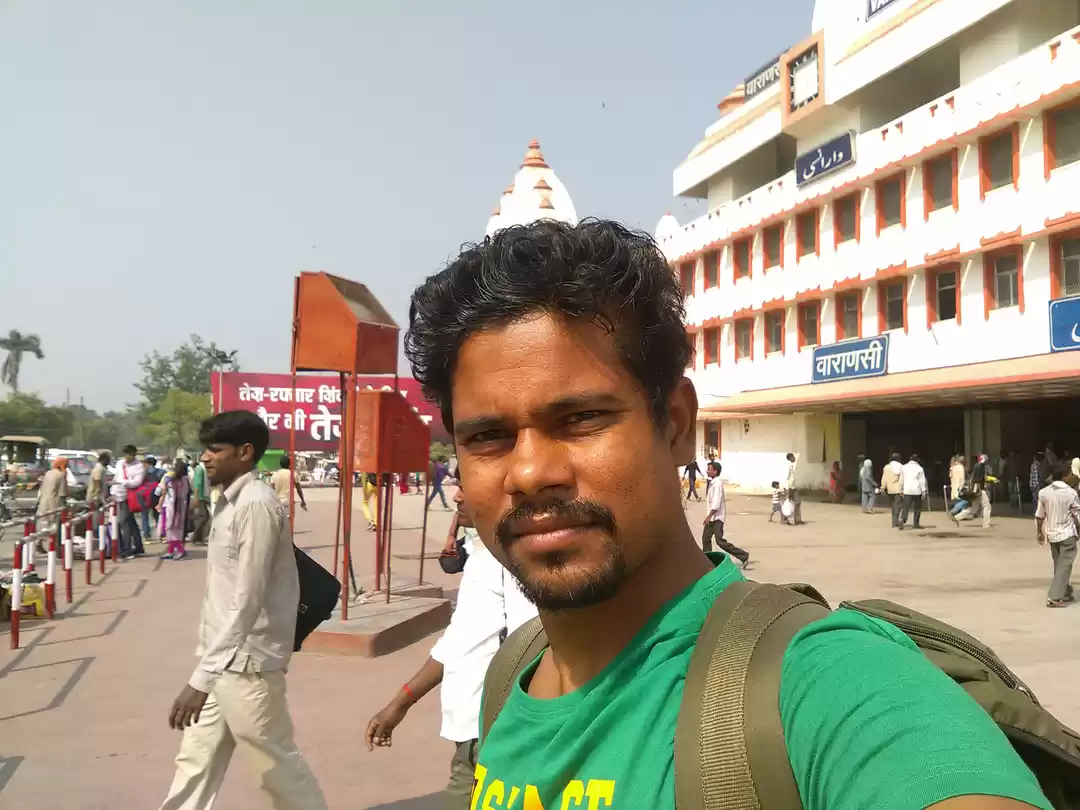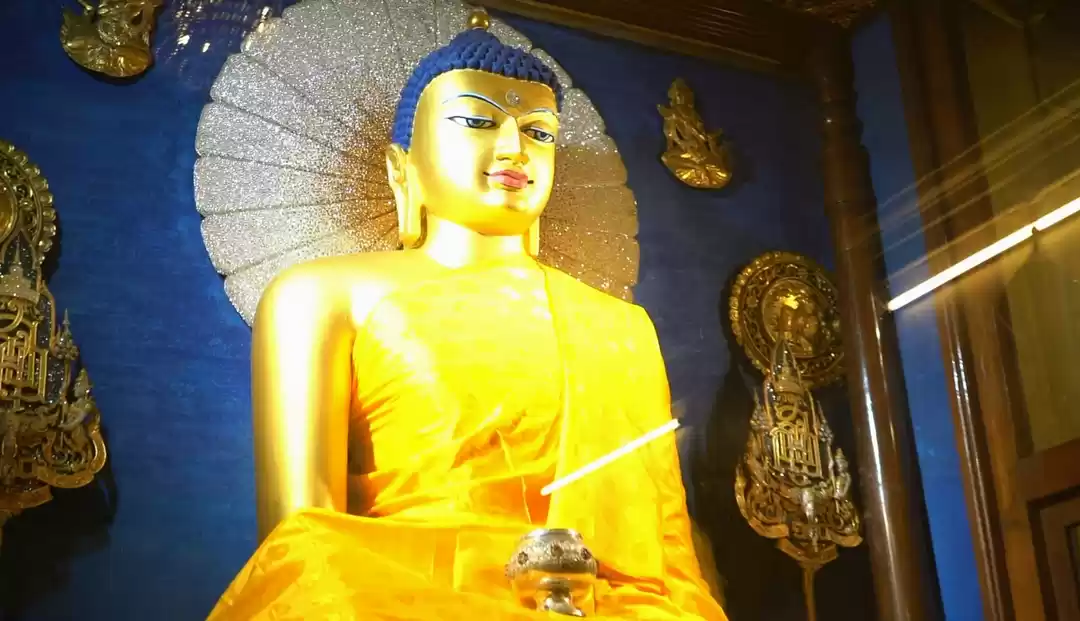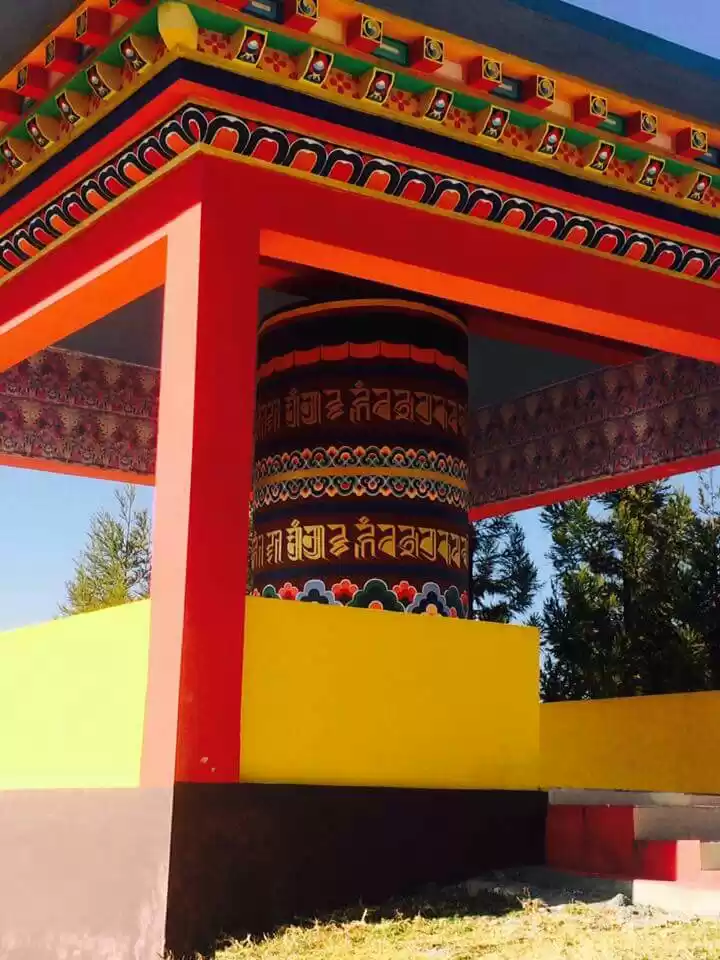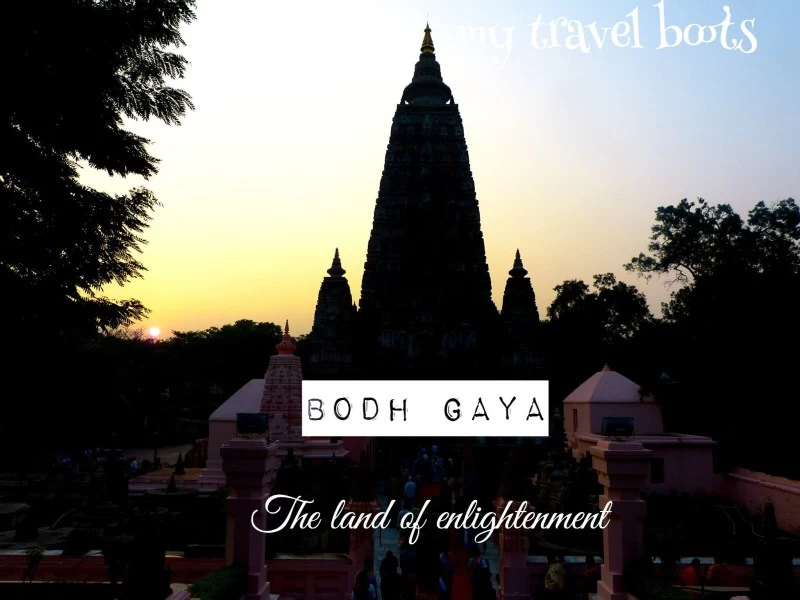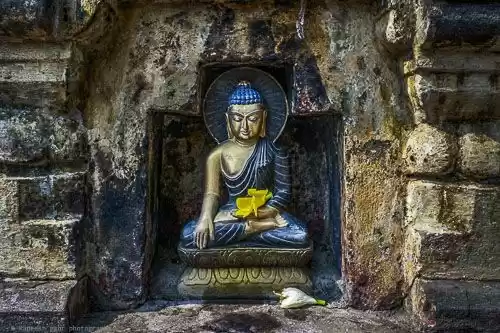Travelling to Bhutan is a unique experience. It’s an experience you won’t find in any other part of the world. While travelling there, you would witness many significant cultural figures depicted throughout the country in the form of sculptures, statues, paintings (also known as ‘Thangkas’).
So before you make a trip to Bhutan, or want to brush up on everything you’ve learnt about these figures in the country, the following list may be of some use. Below are some of the Gods of Bhutan whom you would see throughout the country.
BUDDHA
Born in 500 BC in Nepal, Siddhartha Gautama, meditated for 49 days under a Bodhi Tree to attain enlightenment. His meditation showed him the root cause of suffering and means to end it. Thereafter, he was known as the Buddha, meaning ‘the awakened one’. This is what the world somewhat knows about the founder of Buddhism. But when you visit Bhutan (or other places where Buddhism is widely followed), you’ll see and learn much more than this and the different forms of Buddha – the past, present and the future Buddha to be precise. Apart from their facial difference, one can also recognise them with their mudras (sitting postures).
The Past Budhha - Amitabha Buddha

Probably the best known of Dhyani Buddhas, Amitabha Budhha is also called Amita or Amida Budhha. As the belief goes, long long ago, Amitabha was a king who renounced his kingdom to become a monk. After diligently practicing for five eons, which is practically impossible to measure, the monk realised enlightenment and became a Budhha. Amitabha symbolises mercy and wisdom. He is associated with the third skandha, that of perception. Tantric meditation on Amitabha is an antidote to desire. Amitabha Buddha reigns over Sukhavati, also called the Pure Land. Those reborn in the Pure Land experience the joy of hearing Amitabha teach the dharma until they are ready to enter Nirvana.
You can recognise Amitabha with his hands in the meditation Mudra. His symbol is the lotus, representing gentleness and purity. As a bestower of longevity, Amitabha is called Amitayus, or “Infinite Light.”
The Present Budhha - Shakyamuni Budhha

This is the Buddha whose story we have all read sometimes in our existence. Born in approximately 563 BC to Queen Mahamaya and King Shudhodana of Kapilavastu on the night of the full moon in May, Prince Siddharta led the privileged life of royalty. He got married to Yosodhara and was blessed with a son. At the age of 29, the Prince was travelling outside the palace when he saw the “Four Sights”: a sick man, an old man, a corpse and a monk. Having only experienced a luxurious life before, the Prince was shocked at this sight.
Something touched him deeply. He got convinced that all of samsaric life was pervaded by suffering. From that moment he renounced his royal life, left his wife and child, and set out to find spiritual teachers. At first he engaged in very austere practices. But after six years he realised that such practices were not the true path to liberation from suffering. He walked to Bodhgaya, sat down beneath a tree and vowed not to rise again until he had achieved enlightenment. In the morning, 49 days later, a Buddha arose, the one we all know as Shakyamuni Budhha.
The Shakyamuni Budhha is the most commonly depicted figure in Buddhism. He is most often sitting with his legs crossed on a lotus throne with his right hand touching the Earth and left hand with his palm up above his lap. He has blueish hair, a halo of light above his head, and long earlobes.
The Future Budhha – Maitreya Buddha
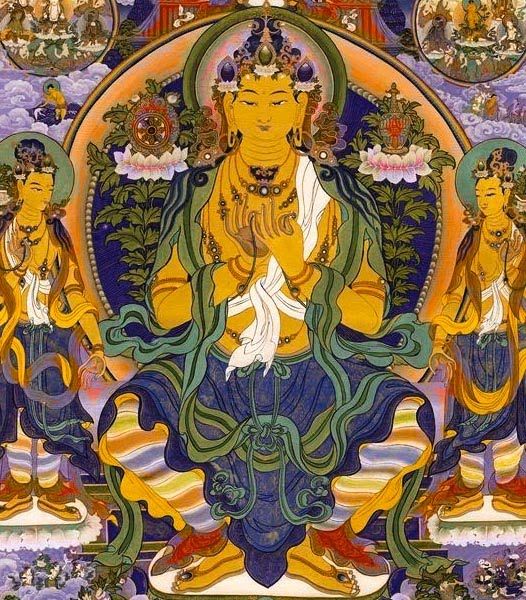
Derived from ‘Mitra’, meaning friend, Maitreya is believed to be residing in Tushita, heaven, at present. He is waiting his last rebirth sometimes in the future, some thirty thousand years hence.
‘In the evil age to come, living beings will decrease in good qualities and increase in utter ignorance, coveting gain and honours, developing their evil qualities, and being far removed from deliverance.’ – Lotus Sutra 13
According to Buddhist tradition, Maitreya is a bodhisattva who will appear on Earth in the future, achieve complete enlightenment, and teach the pure dharma. According to scriptures, Maitreya will be a successor to the present Buddha, Gautama Buddha (also known as Śākyamuni or Shakyamuni Buddha).
He is seen with both his hands in a particular meditating position.
PADMASAMBHAVA, also known as GURU RINPOCHE

“For anyone, man or woman, who has faith in me, I, the Lotus Born, have never departed — I sleep on their threshold.”
How do you describe a man who was immaculately born from within a lotus flower with a thousand petals, in the middle of a lake, having been sent as a meteor from the heart of the Buddha of Boundless light?
The Life Story of Padmasambhava begins with a throne of shining gems, 108 queens, and a king who needs a son. After suitable adventures, the king finds a beautiful eight-year-old boy on an island in the ocean, sitting on a lotus. He tells the king:
“My father is the wisdom of spontaneous awareness. My mother is the Ever-Excellent Lady, the space of all things. I sustain myself by consuming the concepts of duality. My purpose is the act of killing disturbing emotions.”
The child is the beloved Padmasambhava, also known as Guru Rinpoche, an emanation of Buddha Shakyamuni; the story is the account of his visit to Tibet and the manner in which he brings teachings to the Land of Snows.
Guru Rinpoche introduced Tantric Buddhism to Bhutan and Tibet and his name literally means "precious teacher." In 800 AD, after having spread Tantric Buddhism through India and Tibet, he legendarily transformed his follower Yeshe Tsogyal into a flying tigress and flew her back to Taktshang (Tiger's Nest) in Bhutan where he meditated in the caves high up on the cliffs.
Guru Rinpoche is easily distinguishable due to his unique mustache. He carries a dorje (pronounced "door-jay") in his right hand and skull cup in his left hand. Leaning across his shoulder is a trident with three heads that represent victory over desire, anger, and ignorance.
Some of his quotes read -
“If you want to know your past life, look into your present condition; if you want to know your future life, look at your present actions.”
“I am present in front of anyone who has faith in me, just as the moon casts its reflection, effortlessly, in any vessel filled with water.”
DORJE DROLO
When Guru Rimpoche’s dakini took the form of a tigress and helped the Guru to fly to Taktsang, he took a wrathful form, also known as Dorje Drolo. Hence, this deity in reality is one of the eight manifestations of Guru Rimpoche. Recognised by his red colour, dorje in his right hand and a ‘Phurba’ (ceremonial dagger) in his left, he is seen standing on the tigress while wearing a sash of human skulls around his body.
VAJRADHARA

Vajradhara is considered to be the Dharmakaya Buddha, who embodies ultimate emptiness, and is also considered to be supreme essence of all (male) Buddha’s. The name Vajradhara means ‘Holder of the Vajra or Thunderbolt’, implying that Vajradhara is the holder or protector of Vajrayana Buddhism. He is the supreme guru of the Kargyupa and the principal deity of this sect whose origin goes back to Marpa. Vajradhara is Buddha from the beginning with no conquest of Buddhahood. He is the Absolute, beyond the 5 ‘Dhyani Buddhas’, transcending them and nevertheless permeating them as the source of all apparent things.
Often times Vajradhara is portrayed as dark blue; in Buddhist culture, this dark blue symbolizes pureness, and healing in the case of the Buddha of medicine. In Vajradhara’s case, his shade of blue represents the historical realization of enlightenment.
He is always represented seated, with lotus posture and wears the Boddhisattva crown as well as dress and ornaments. His arms are crossed on his breast in the vajra-hum-kara mudra holding the vajra and ghanta.
CHANA DORJE (also known as VAJRAPANI)
One of the 8 most significant Bodhisattvas, Chana Dorje is the God of Power and Energy in Bhutan. He is also believed to be the God of Thunder and Rains. Not only this, also referred to as the God of Snakes, Chana Dorje protects the people from Naga, or snakes. Easily recognised by his blue colour, five skull crown, snake necklace and a tiger skirt, he is seen holding a ‘Dorje’ which is also known as ‘Vajra’ in Sanskrit (also called the Diamond Thunderbolt) in his right hand in the Tarjani Mudra. The mudra signifies a threatening gesture to show he’s ready to hurl a thunderbolt from the ‘Dorje’. He is commonly worshipped and depicted along with the Bodhisattvas of compassion and wisdom as part of the Rig Sum Gompo trinity.
AVALOKITESHVARA

Avalokiteshvara (or Chenrezig) is the Bodhisattva of Compassion. He is the earthly manifestation of the self-born eternal BuddhaAmitabha whose figure is represented in his headdress, and he guards the world in the interval between the departure of the historical Buddha, Gautama, and the appearance of the future Buddha, Maitreya. Avalokiteshvara protects against shipwreck, fire, assassins, robbers, and wild beasts. He is the creator of the fourth world, which is the actual universe.
Of all the deities in Mahayana Buddhism, the bodhisattva Avalokiteshvara is one of the most celebrated. He is the lord endowed with complete illumination, who refrains from entering the blissful state of nirvana to remain here below and save the creatures of the earth. This devotion to the salvation of others emphasizes the profound compassion this bodhisattva represents.
MAHAKALA
Mahakal is believed to be the protective deity of Shabdrung Ngawabg Namgyal, the unifier of Bhutan, and hence is worshipped as one of the protectors of Bhutan. The Mahakala takes on many forms, and is often portrayed with many arms. He is depicted with a dark blue or a dark grey colour. The Bhutanese pray to him to protect land and country and for health.
He carries a skull cup and the Vajra chopper, a weapon that is half dorje and half blade used to cut through ego and other negativities. He also wears a garland of fresh demon heads and poisonous snakes around his body.
MANJUSHRI (JAMPEL YANG)
Manjushri is known as the Bodhisattva of Wisdom and is the bodhisattva counterpart to Adi Buddha (Thogmai Sangye), the Primordial Buddha. The embodiment of all of Buddha’s wisdom, ‘Manju’ means charming, beautiful & pleasing, whereas ‘Shri’ means glory & brilliance. Manjushri is often seen riding a lion and is depicted with holding a double-edged flaming sword in his right hand and a lotus flower in his left on which rests the Prajnaparamita (Great Wisdom). While the Prajnaparamita Sutra on the lotus flower symbolises wisdom as pure as lotus, the sword represents the sharpness of wisdom to cut through illusion. And the lion, known as the animal king, symbolises the stern majesty of wisdom.





